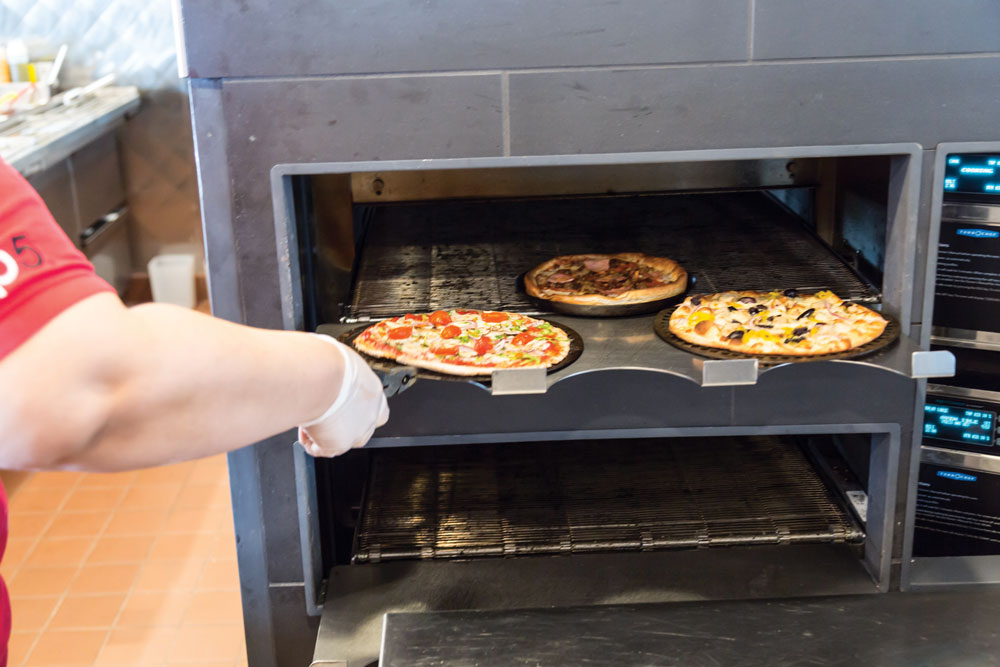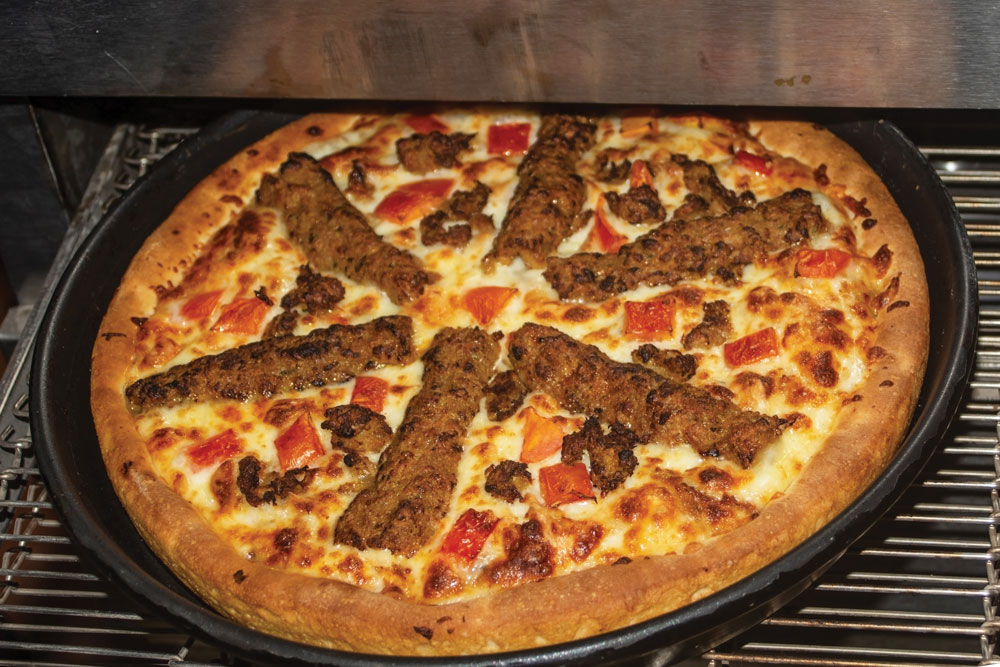By Tracy Morin
It’s easy to see why conveyor ovens remain a popular choice among pizzerias. They’ve been vastly improved over the years to offer consistent, high-quality performance, and they’re practically idiot-proof to operate—especially important when dealing with unskilled staff members. “Employees can prepare a lot of pizzas with minimal supervision,” notes Tom Scarda, CEO and founder of The Franchise Academy in Wantagh, New York. “You don’t have to babysit conveyor ovens, which makes the staff more efficient. They can place the pizzas on the conveyor, go work on something else, and come back when the pizzas are done.”
Scarda adds that they have their downsides, too—possibly requiring more space than, say, deck ovens, and demanding more complicated cleaning and maintenance protocols—but they’re still a go-to choice for top chains like Domino’s and Cicis. To learn more about what conveyor ovens bring to an operation, and their potential pitfalls, we asked Manhattan, Kansas-based pizza industry consultant Tom “The Dough Doctor” Lehmann to share everything you need to know about conveyor ovens.
Models and Benefits
Conveyor ovens fall into three basic types. The traveling tray or revolving tray oven features plates that carry the food; though they can be higher-cost investments, they work very well for hands-off baking. Second, the infrared oven (which originally started the conveyor trend) works much like a toaster; its glowing wires heat food but provide more shallow penetration. Third, the air impingement oven is the most common type now in use for pizzerias and baking applications—what people usually think of when they refer to conveyor ovens.
Like any oven, infrared types have positives and negatives. Most importantly, this type does not offer air flow—an important distinction, because warm air holds more moisture than cold air. Combining heat and air flow, as with air impingement ovens, more effectively dries out foods and cooks them faster (that’s why blow dryers for hair, for example, combine the two). Infrared types have their place in the industry—they’re great for par-baking crusts or making snack foods—but the ability to dry out pizzas in the oven makes air impingement types a popular choice.
The benefits of these ovens are plentiful: They have a fairly small footprint, and when electric models are positioned on wheels, they can be unplugged and moved (not recommended, but a possibility). With a flexible hose, they can be moved for cleaning, as opposed to deck ovens, which are more fixed in place. And, of course, they require pretty much no training to operate; the employee simply puts the pizza or other menu item on the conveyor to bake, then removes it at the end of the cycle.
Compared to deck ovens, which require a clear space (equal to about 1.5 times the size of the oven) in front of the oven for operation, conveyor ovens don’t need as much space at either end. And for operators who pile on the toppings, air impingement styles help avoid the soggy mess that could occur by drying out the tops of pies. They also have a higher baking capacity, able to churn out more pizzas per hour than deck ovens, which makes them a solid solution for high-volume operations.
In fact, with vast improvements to air impingement ovens over the last decade or so, they’re now able to consistently bake even different crust thicknesses side by side. Better bake quality and ramped-up oven design in recent years have made these types a reliable choice across the board. Recent innovations can even include newfangled features, such as idle modes to lower energy consumption when no pizzas are in the oven, saving on costs over time.

Conveyor ovens, such as those used by The Colony, Texas-based Pie Five Pizza, have a fairly small footprint and require very little training to operate.
Conveyor Considerations
While pizzas with different crusts can potentially be baked side by side, operators will have to make tweaks for other menu items, like breadsticks, garlic knots or wings. An operator may need to invest in a second oven or a second deck for the conveyor (they’re stackable, up to three high).
Operators should also keep in mind that conveyor ovens have more working parts—and it helps to understand exactly how they operate and the physics behind them, especially as related to finger configuration and how this affects the ultimate bake achieved. Lehmann laments that many operators who purchase these ovens don’t take the time to understand their functions, so he encourages asking questions of oven manufacturers—how exactly does it work?
Also, conveyor ovens must be cleaned, which requires pulling out the conveyors, so operators should keep this in mind when they decide where to install the oven. Once every month or two, they should pull out the conveyors and the top and bottom fingers, then reassemble, making the maintenance of these ovens more time-consuming than other types.
Keep in mind that air impingement ovens are not just ovens but baking systems—they require a baking platform or carrier, which could be a pan, disc or screen. The type chosen will impact the bake achieved and thus must be taken into account. Choosing a screen—perforated disc or solid disc, for example—will depend on both the manufacturer’s recommendation and the operator’s desired outcome; just make sure that the manufacturer is fairly well-versed in baking platforms.
Finally, as you would when selecting any major piece of equipment, pay attention to the manufacturer’s service. Lehmann recommends asking yourself how they treat you, how knowledgeable they are on the product, and how willing they are to make the oven work for your operation, products and needs. Some offer very good warranties, so inquire about them if that is an important feature to you. Also ask if they have dedicated parts—meaning you have to obtain parts direct from the manufacturer—and consider the manufacturer’s location in relation to your own. If something goes wrong, how long would a repair or part replacement take? If a repair will take days, it might be better to go with a less-complicated deck oven, which has fewer working parts and is easier to fix yourself.
Tracy Morin is PMQ’s senior copy editor.













